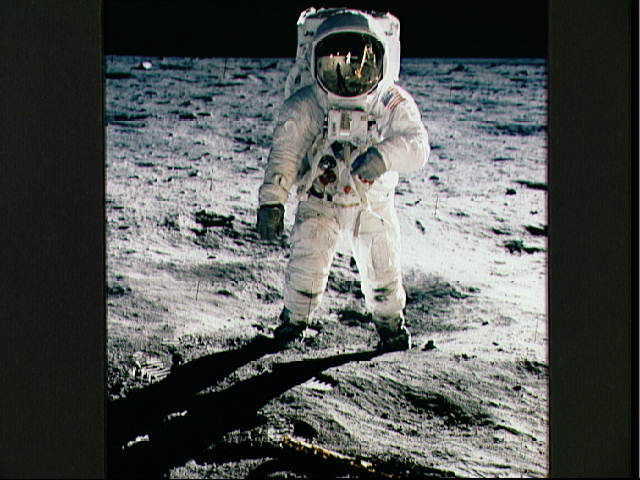
The Moon

The moon, the second brightest object in the sky after the Sun, is the only natural satellite of Earth. With a diameter of over 3476 km, about one-fourth that of earth, and a mass of 7.35e22 kg, the moon orbits 384,400 km from Earth. The mass of the earth is 81 times greater than the mass of the moon. Thus the average density of the moon is only three-fifths, and the pull of gravity at the lunar surface only one-sixth, that of the earth. It completes one revolution in an elliptical orbit about the earth in 27 days, 7 hr, 43 min, and 11.5 sec.
It is classified as one of the five terrestrial planets in our solar system, and is the first extraterrestrial body visited by humans. It is also the first body from which deposits have been recovered and studied. The moon also influences our atmosphere, through its gravitational force, which affects the ocean tides.
The moon has several different phases as it moves along its orbit around the earth. Half the moon is always in sunlight, just as half the earth has day while the other half has night. The phases of the moon depend on how much of the sunlit half can be seen at any one time. In the phase called the new moon, the face is completely in shadow. About a week later, the moon is in first quarter, resembling a luminous half-circle; another week later, the full moon shows its fully lighted surface, a week afterward, in its last quarter, the moon appears as a half-circle again. The entire cycle is repeated each lunar month. The moon is full when it is farther away from the sun than the earth; it is new when it is closer.

The manned landings on the lunar surface as part of the U.S. Apollo program made direct measurement of the physical and chemical properties of the moon a reality. The Apollo astronauts collected rocks, took thousands of photographs, and set up instruments on the moon that sent information back to earth by radio telemetry. These instruments measured temperature and gas pressure at the lunar surface, the heat flow from the moon's interior, and molecules and ions of hot gases streaming out from the atmosphere of the sun, called the solar wind. They also measured the magnetic field and gravity of the moon, seismic vibrations of the lunar surface caused by moonquakes, landslides, and meteoroid impacts, and the precise distance between the earth and the moon.
Our understanding of the moon and its origins have grown tremendously in the past 30 years. Through these measurements and further research we have advanced primitive theories into commonly accepted ideas. We can now use this knowledge to allow us to research and understand other planets with a similar approach. With the recent Mars explorer and other probes, we can advance our knowledge of the solar system even further in the next 30 years.
Hamilton, Rosanna L."Moon", [Online]. Available: http://bang.lanl.gov/solarsys/moon.htm
Arnett, Bill. (9/21/97). "Moon," [Online]. Available: http://seds.lpl.arizona.edu/nineplanets/nineplanets/luna.html
“Moon.” Funk & Wagnalls New Encyclopedia, 1995.